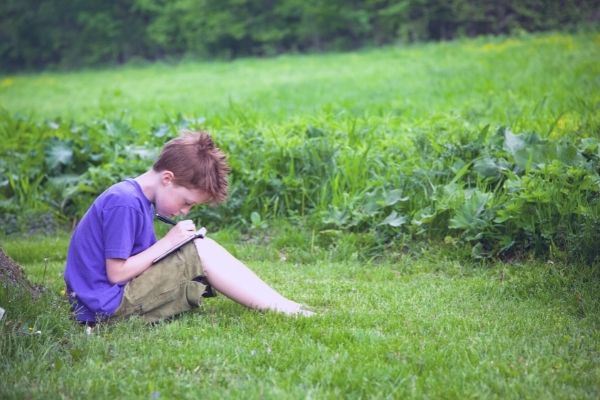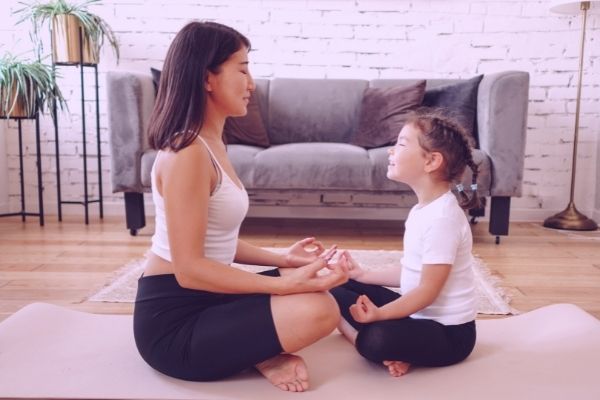Children are full of emotions – and it takes time for them to learn how to deal understand them. Here are some of strategies to help your child cope with anxiety.
Do you ever feel like your child is having a meltdown for no reason? Like, it just comes out of nowhere and you don’t know where to start to help him or her? Even for the littlest of human beings, anxiety can occur, except they don’t know how to express themselves the way we do.
Dealing with Anxiety as an Adult
Truth be told, we as adults aren’t always the best at it either. Even as an adults, our anxiety can come out in all forms of emotions and reactions. In one instance, I might be reserved and quiet, while in another, I might talk more, to handle that anxious feeling.
Helping Children Understand Their Anxiety
I have come to understand what I need depending on the situation. What is manageable for adults can sometimes feel completely overwhelming and confusing to children. They are only experiencing some of these feelings for the first time, so it’s hard for them to process how to handle them. Children are in the midst of discovering the world and themselves, so that sometimes their anxiety comes out in a language we are unable to interpret.
It touches my heart to be able to share some of my best-found solutions to help your child cope with anxiety.
Not surprisingly, the same solutions that calm us down, can calm down our children. They just don’t have all the years of experience and trials and errors that we have under our belt. Our hardest job is to recognize the anxiety in all its forms and suggest solutions they will appreciate. Teaching them earlier than we were taught will give them a fighting chance when stress is high, and anxiety builds.
11 Ways to Help Your Child Cope with Anxiety
Here are ways to help your child (and honestly yourself) to relieve anxiety.
Meditation
When my children were in kindergarten, they were blessed with a teacher that understood the power of meditation. After recess, the children were encouraged to relax at their desk for a few minutes, with their heads down on their crossed arms, and listen to some soft music.
This early form of meditation was further developed each year. And while my boys might not sit and meditate every day, my oldest has been known to sit outside and have a solitary moment of deep breaths before he takes on studying for a test. There is no need to enroll in a meditation class and learn how to sit still for hours, what matters is helping your child calm his/her mind and focus on breathing.
Third Recess
Our elementary school has introduced a third recess during the course of the school day. Pediatric studies were done with regards to recess time, and the conclusion was made that recess not only benefits a child’s physical state, but their cognitive state as well, allowing them to perform better with school work after a recess. (The Crucial Role of Recess in School)
When children reach middle school, however, break times seem to be less important and more confined to indoors. Encouraging your child to get outside, even after school, is a great way to help them feel refreshed and ready to take on any anxiety they may face afterwards.
Family Meals
Having family meals is invaluable to children for so many reasons. Mainly, it is a perfect time to express how their day went in a safe environment, surrounded by the people that love them most. For little ones, it could be hard to coax them to discuss things. Starting the conversation with your own day can help.
“Today when Auntie Angie called me, it made me so happy!”, “When I got a flat tire on my way to work, it made me angry and frustrated”. Helping your child name a good thing and a bad thing that happened in their day over dinner will strike more of a conversation. We still do that when they seem less interested in chatting and it works.
Screen Less
We have heard it all before, screen time can stimulate the brain and in turn cause anxiety. But I will not suggest no screen time. Instead, find family movies that help them think about difficult situations, play video games together for some healthy competition, gather together and play YouTube videos you found for them.
Show your children that screen time can be awesome even with limits. I will, however, suggest monitoring screen time for your child. Set rules early, such as no phones/tablets in your room, no phones at the dinner table (parents included) so everyone starts healthy screen time habits.
Journaling
Anxiety has a bad way of causing us to self-doubt and be afraid of things that might otherwise be manageable. To quiet the negative voice inside your child’s head, consider journaling.

Depending on the age of the child, you might want to introduce journaling with actual prompts. Creating a mini template of questions to answer can help them get started. Examples of questions can be “what happened today that made you happy?” “what made you feel anxious?” “what would have made that situation feel better?”
Healthy Eating
Over the years, I have noticed when a child has had a healthy meal or not and how they react to situations can vary. Ask any teacher and they will tell you the same thing. In fact, many teachers encourage kids to have a healthy snack earlier on in the day to help them focus better.
There is no doubt in my mind, when I myself have too much sugar or fatty foods, my mood swings to the dark side. It stands to reason children can feel the same. Homemade fruit smoothies, nuts and whole grains are great snacks. Anything with tryptophan (amino acid that produces feel-good chemicals in the brain) like turkey, bananas, peanut butter and oats are all great additions to your meals when dealing with anxiety.
Down Time
Allow days with absolutely nothing to do after school. No extra activities, no sports, no errands: nothing. The goal is not to help your child turn into a couch potato, it is simply to let them sit in their feelings for a little while.
Overscheduling can suffocate your child’s ability to truly understand their feelings about certain situations, and this can lead to high anxiety when a stressful situation presents itself. Allowing down time leads to self-reflection, creativity, possible conversations, and enjoying the company of being with themselves.
Take a Drive
You may have heard it before how children seem to feel more comfortable talking things out over a drive. Some of the greatest conversations I have had with my boys have happened while I am driving, and they are in the backseat. One-on-one drives with your child can help them open up and express their feeling when it comes to anxiety.
If you can only schedule in a quick drive to the grocery store, it helps to have alone time to chat, even when you think there is nothing to talk about. Between car drives and late-night tuck-ins to bed, lots of things bubble to the service, big and small.
Relatable Moments
If you can look back in your experiences as a child and talk about how certain situations made you feel, it may very well help your child understand they are not alone. You might get this comment from older kids: “Things are different now, you’re old”. Sweet, I know, but expected. Things are different now, but feelings can be similar. The feeling of isolation in anxiety makes it really hard to address, so finding a common feeling through past experiences can help your child. It might also help them open up to you more when they feel alone again.
Help to Fall Asleep
Based on our own experiences, falling asleep when anxious is near impossible. My boys have always had a hard time getting to bed, so our nighttime routine is long and ritualistic.
One method of calming down the anxiety is putting each part of the body to sleep individually. This method helps a child relax each part of the body by focusing on it alone. The idea is to tense up each part, example the calf, for a few seconds and then releasing it to go to sleep, starting from the feet and working up. The sleeping body routine takes a little practice but is beneficial and eventually children can do this on their own.
Remind Them you are Always There
Sometimes, a child’s anxiety can be so obvious, while other times, it’s hard to know what’s on their mind. They may express their anxiety with yelling, crying or not talking at all. Parenting can be a bit like detective work, especially when it comes to understanding anxiety, but what will help children is seeing you are always there for them.
No matter how small the situation may seem to you, if your child is able to open up about it, you have created a special bond with them. Being their safe space is golden, and it will help in years to come when the small anxieties become much bigger.
To Summarize
Anxiety is the most common mental illness in the U.S., affecting 40 million adults. Anxiety in children also exists, and there are ways that we can help them cope. Above, we discussed some of simple coping methods such as:
- Meditation
- Participating in a third recess
- Gathering for family meals
- Less screen time
- Journaling
- Healthy eating
- Down time and relaxing time
- Taking a drive
- Finding relatable moments
- Helping them to fall asleep
- Reminding them that you are always there for them
If you enjoyed this my tips on how to help your child cope with anxiety, then you may like some of these parenting articles:
When to Say No (It’s More Often Than you Think!)
What Hugging a Baby Actually Does
Have your children ever experienced anxiety? How did you help them cope? Let’s talk about it in the comments below!


A version of this post was originally written for MomResource.ca . Their fantastic site was a wonderful hub of information for parents in all areas for over 20 years. I was truly honoured to contribute to the site with each and every post I wrote. MomResource.ca has recently shut down, so I will be sharing my posts here over time, with some slight alterations.





